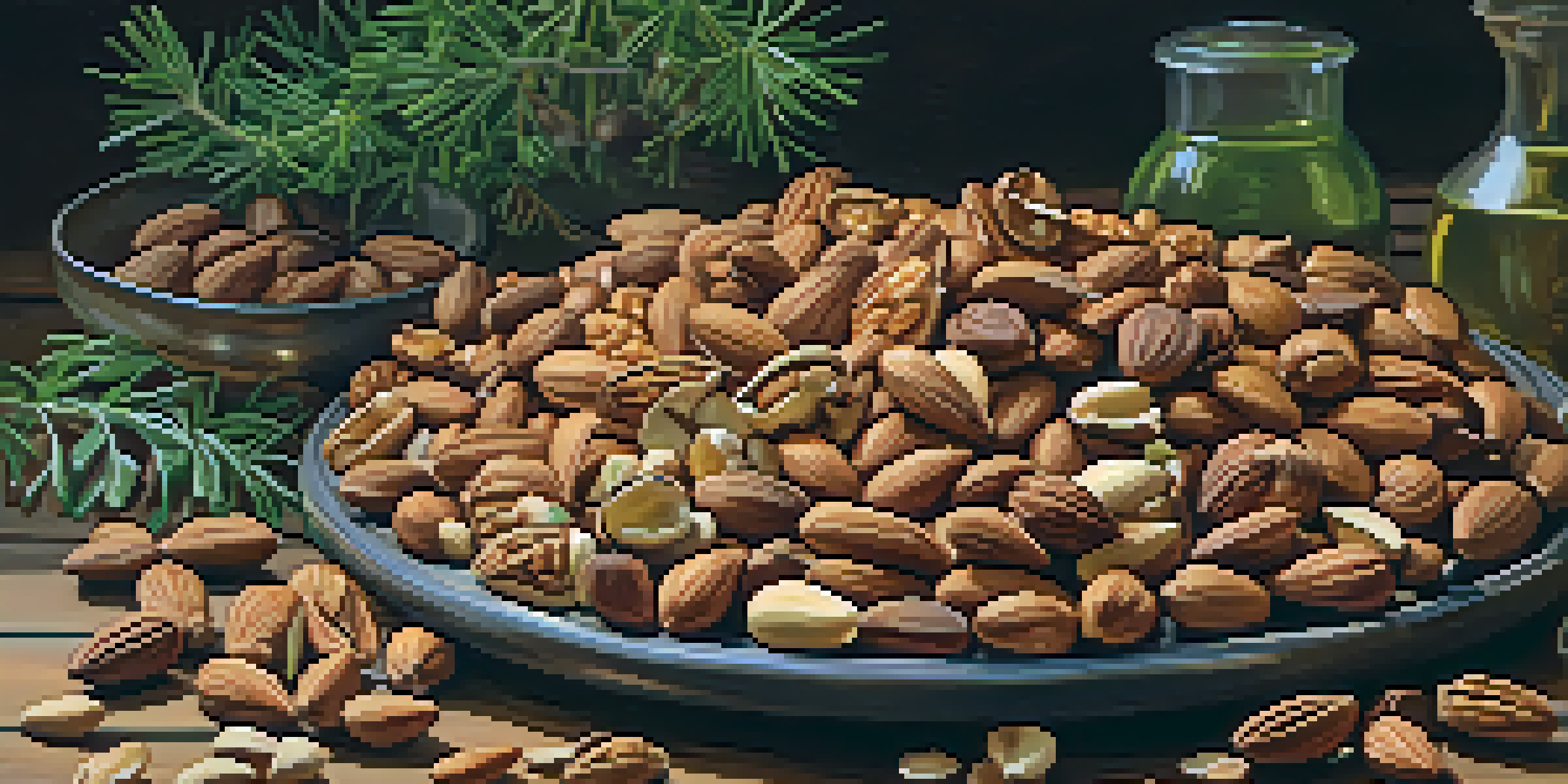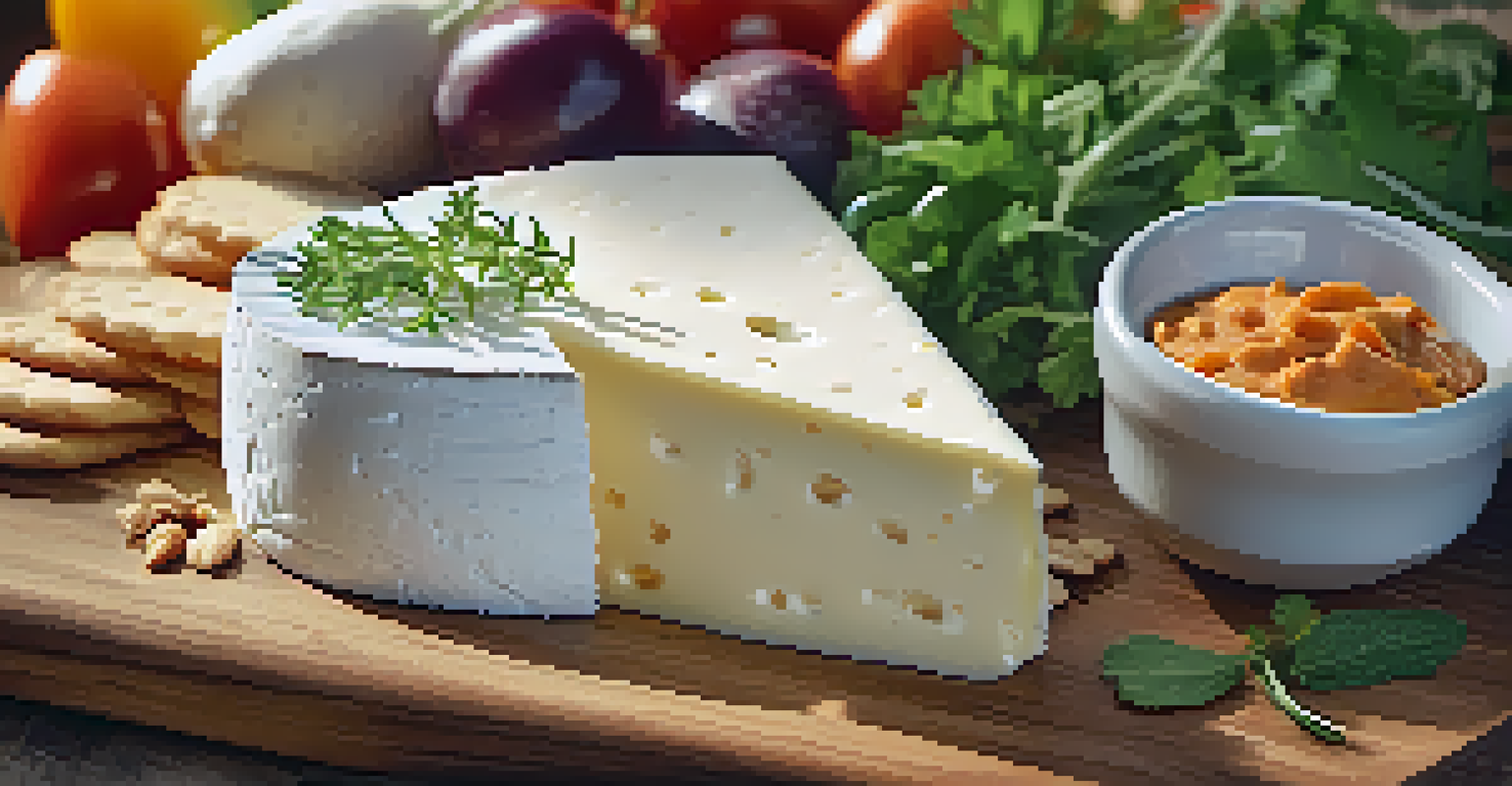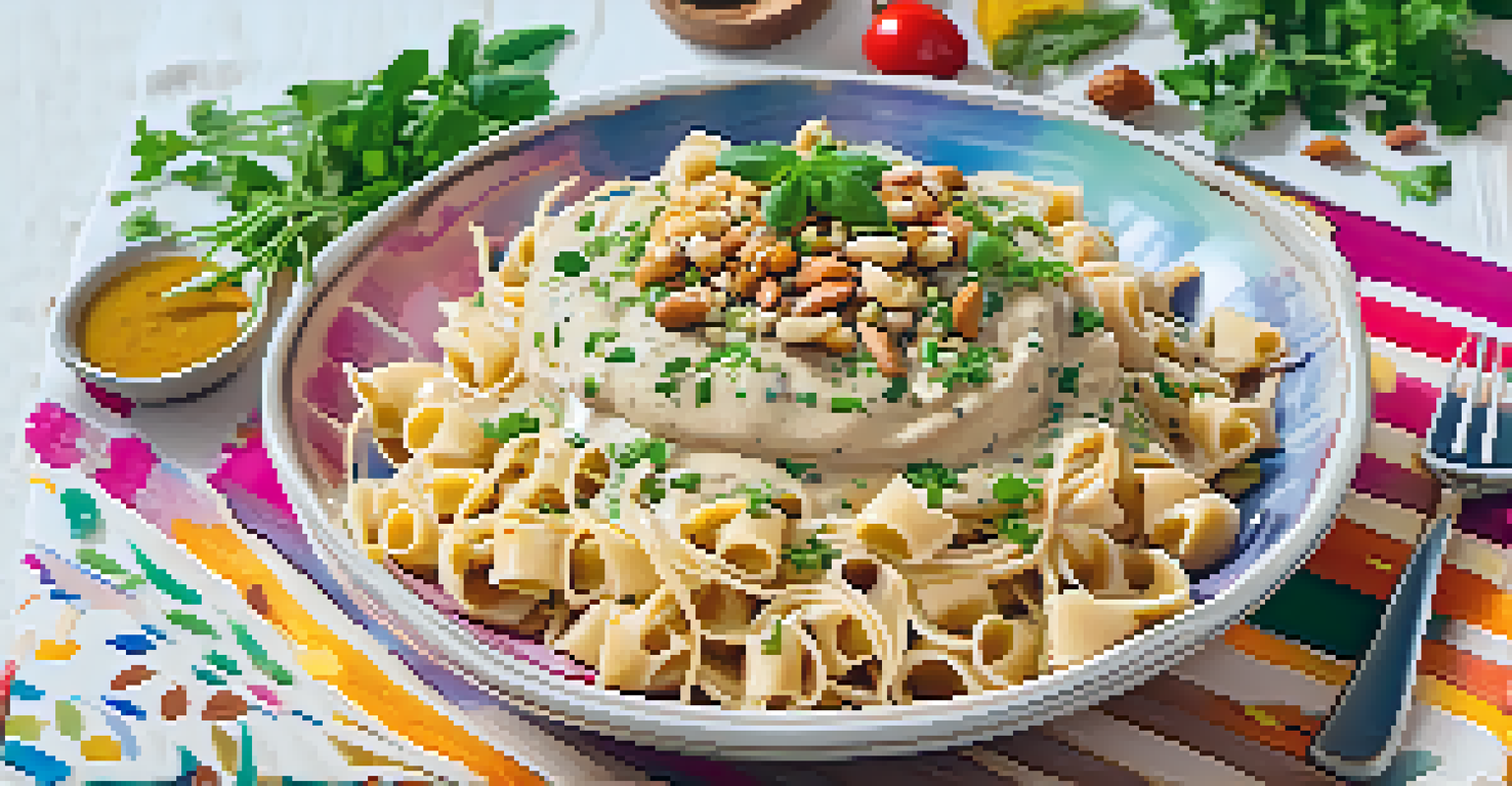Creative Cooking Techniques for Nuts in Vegan Cuisine

Roasting Nuts for Enhanced Flavor and Crunch
Roasting nuts is a simple yet powerful technique that enhances their natural flavor. When you roast nuts, the heat brings out their oils, making them richer and more aromatic. This can transform the experience of even the most basic nut, adding a delightful crunch and depth to your dishes.
Food is not just about nutrition; it's about enjoyment, pleasure, and creativity.
To roast nuts, spread them in a single layer on a baking sheet and pop them in the oven at 350°F (175°C) for about 10-15 minutes. Keep an eye on them, as they can quickly go from perfectly toasted to burnt. The aroma will guide you; when you start to smell them, it’s time to check and stir them for even roasting.
Roasted nuts can elevate salads, vegan cheeses, or even desserts. Think about adding them to a fresh salad for an extra layer of texture or sprinkling them over a creamy vegan soup to bring a contrast of flavors and crunch.
Using Nuts in Homemade Vegan Milk and Cream
Nuts can be the stars of your homemade vegan milk and cream. By blending soaked nuts with water, you create a creamy, dairy-free alternative that's rich in flavor and nutrients. Almonds, cashews, and hazelnuts are particularly popular for this purpose, each lending a unique taste to your creations.

To make nut milk, soak your chosen nuts for several hours, then blend them with fresh water until smooth. Strain the mixture through a nut milk bag or cheesecloth to remove the pulp, and voilà! You have a delicious base for smoothies, coffee, or even baking.
Roasting Nuts Enhances Flavor
Roasting nuts at 350°F brings out their rich oils, adding depth and a delightful crunch to various dishes.
Nut cream is a fantastic addition to sauces and soups, providing a luscious texture without any animal products. Simply blend soaked nuts with a bit more water and season to taste; you’ll have a versatile ingredient that can take your cooking to the next level.
Nut Butters: A Versatile Vegan Staple
Nut butters are not just for spreading on toast; they are incredibly versatile in vegan cooking. From adding creaminess to smoothies to enriching sauces and dressings, nut butters can enhance flavors and improve texture in countless dishes. Popular choices include almond, cashew, and peanut butter.
The secret to great cooking is not about the ingredients you use, but how you use them.
Making your own nut butter is a breeze! Just roast the nuts lightly, then blend them in a food processor until smooth. You can customize your nut butter by adding spices, sweeteners, or even cocoa powder for a chocolate twist, making it an exciting addition to your pantry.
Incorporating nut butter into your recipes can transform a simple dish into something extraordinary. Try adding a spoonful of almond butter to your oatmeal or using cashew butter in a creamy vegan pasta sauce for an added layer of richness.
Incorporating Nuts into Vegan Sauces and Dressings
Nuts can be fantastic thickeners and flavor enhancers in vegan sauces and dressings. Blending nuts with herbs, spices, and liquids creates a creamy base that can elevate salads, pasta, and grain bowls. Cashews are particularly popular for this purpose due to their buttery texture when blended.
To make a quick vegan dressing, blend soaked cashews with lemon juice, garlic, and your choice of herbs. The result is a creamy, zesty dressing that pairs beautifully with leafy greens or roasted vegetables. You can adjust the consistency by adding more water or oil depending on your preference.
Nuts as Versatile Vegan Ingredients
Nuts can be transformed into milk, cream, and butters, making them essential for creamy, dairy-free cooking.
Using nuts in sauces not only adds depth but also boosts the nutritional profile of your meal. Nuts provide healthy fats and protein, making your dishes more satisfying and wholesome.
Creating Vegan Nut-Based Cheeses
Nut-based cheeses are a delicious alternative for those who love the richness of dairy but want to maintain a vegan lifestyle. By fermenting blended nuts with probiotics or using ingredients like nutritional yeast, you can create creamy spreads or hard cheeses that rival their dairy counterparts. Cashews and almonds are the most commonly used nuts for this purpose.
To make a simple nut cheese, soak your nuts, blend them with nutritional yeast, garlic powder, and your choice of seasonings, then let it ferment for a day or two. The result is a tangy, flavorful cheese spread that can be enjoyed on crackers, in sandwiches, or as part of a charcuterie board.
With nut-based cheeses, you can experiment with flavors and textures. Try adding herbs, spices, or even smoked paprika for a unique twist that will impress your guests and satisfy your cheese cravings.
Utilizing Nuts in Vegan Baking for Texture and Flavor
Nuts can play a significant role in vegan baking, adding both texture and flavor to a variety of recipes. Whether they are whole, chopped, or ground into nut flour, nuts can enhance cookies, cakes, and breads, providing a satisfying crunch and rich taste. Almonds, walnuts, and pecans are particularly popular in baked goods.
Incorporating ground nuts into your baking can also boost the nutritional value of your treats. For example, substituting a portion of flour with almond flour not only adds flavor but also increases protein and healthy fats in the final product, making your baked goods more filling and nutritious.
Global Nut-Based Vegan Dishes
Exploring global cuisines showcases how nuts can be the foundation of flavorful vegan meals, like Thai peanut sauce and Indian cashew curry.
Additionally, nuts can be used as toppings for muffins or pancakes, adding a delightful crunch that contrasts beautifully with soft textures. Consider tossing in some chopped nuts to your favorite vegan brownie recipe for an added layer of flavor and texture.
Exploring Global Nut-Based Vegan Dishes
Global cuisines offer a treasure trove of nut-based dishes that can inspire your vegan cooking. From Thai peanut sauce to Indian cashew curry, nuts can be the foundation of flavorful meals that are both satisfying and nutritious. Exploring these dishes can expand your culinary repertoire and introduce new flavors to your table.
For instance, a classic Thai dish like Pad Thai often incorporates crushed peanuts for a crunchy topping. You can easily adapt this recipe by using tofu or tempeh instead of meat, ensuring a delicious vegan version that captures the essence of the original dish.

Additionally, Middle Eastern cuisine features many nut-based options, such as tahini, which is made from ground sesame seeds but can be substituted with blended nuts for variety. By incorporating these global flavors into your cooking, you can enjoy a diverse range of meals while keeping it vegan.